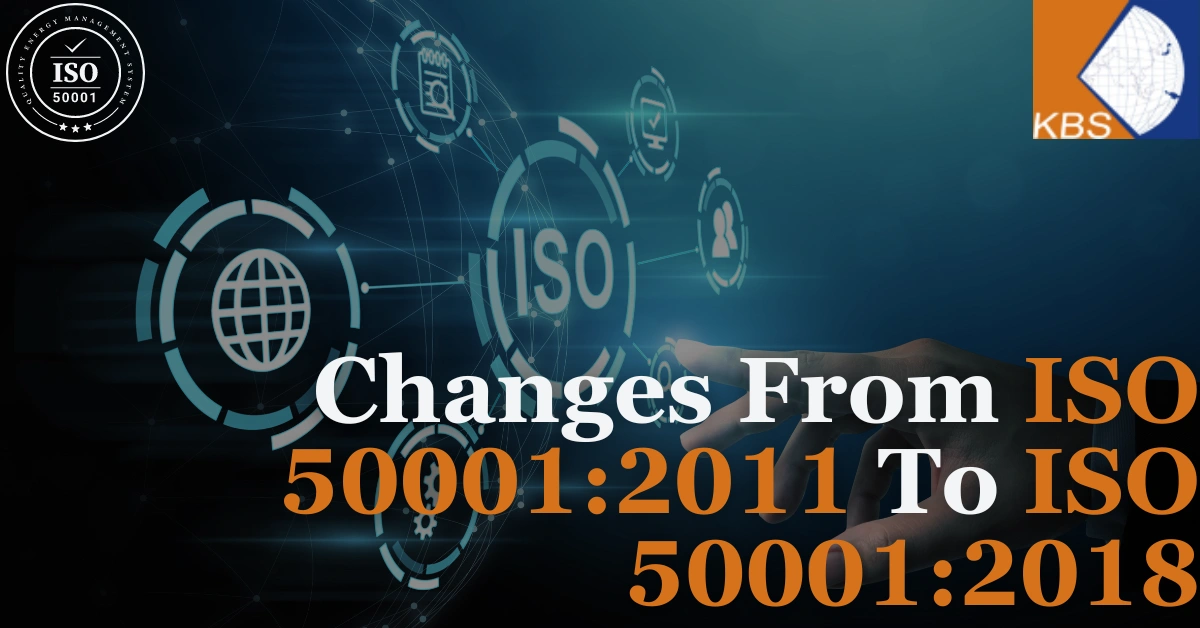
In today’s world, the importance of energy management cannot be overstated. Organizations across various sectors are increasingly recognizing the need to adopt sustainable practices and reduce their environmental impact. To aid in this endeavor, the International Organization for Standardization (ISO) introduced ISO 50001, an international standard for energy management systems. ISO 50001:2011 laid the foundation for efficient energy management, and in 2018, ISO released an updated version, ISO 50001:2018, to enhance its effectiveness and relevance. This blog post will delve into the key changes introduced in the transition from ISO 50001:2011 to ISO 50001:2018.
ISO 50001:2018 embraces a harmonized structure known as the High-Level Structure, aligning it with other ISO management systems standards such as ISO 9001 for quality management and ISO 14001 for environmental management. This alignment facilitates integration and compatibility with other management systems, allowing organizations to establish an integrated approach to quality, environmental, and energy management.
The revised standard places greater emphasis on understanding the context of the organization. It requires organizations to identify internal and external factors that may affect energy performance and the effectiveness of the energy management system. By considering these factors, organizations can proactively develop strategies to address energy-related risks and opportunities.
ISO 50001:2018 emphasizes the role of top management in driving energy management initiatives. Senior leadership is expected to demonstrate their commitment to energy management by establishing an energy policy, setting energy objectives, and ensuring the availability of necessary resources. This change aims to foster a culture of energy efficiency throughout the organization.
The updated standard incorporates the concept of risk-based thinking. Organizations are now required to identify and assess risks and opportunities related to energy performance. This approach enables organizations to prioritize actions and allocate resources efficiently, thereby maximizing the effectiveness of their energy management efforts.
ISO 50001:2018 introduces more explicit requirements for establishing and documenting energy performance indicators (EnPIs). EnPIs are essential for monitoring energy performance, identifying trends, and evaluating the effectiveness of energy management actions. The standard provides guidance on selecting EnPIs and determining appropriate baselines for comparison.
ISO 50001:2018 places greater emphasis on operational control measures. It requires organizations to establish, implement, and maintain documented processes to ensure effective energy performance. These measures involve monitoring, measuring, and analyzing energy consumption data and evaluating compliance with legal and regulatory requirements.
The revised standard encourages organizations to adopt a lifecycle perspective when considering energy performance. It emphasizes the need to evaluate energy performance throughout the entire life cycle of products, services, and processes. This holistic approach enables organizations to identify energy-saving opportunities during production and design, procurement, use, and end-of-life stages.
ISO 50001:2018 places increased emphasis on communication processes within the organization. It requires clear documentation of energy management roles, responsibilities, and authorities. Additionally, organizations are encouraged to communicate energy performance information internally and externally, fostering transparency and accountability.
The revised standard includes enhanced requirements for performance evaluation. Organizations must establish a systematic process to monitor, measure, and analyze energy performance. This includes conducting energy reviews, conducting internal audits, and evaluating the effectiveness of energy management actions. The aim is to identify areas for improvement and make informed decisions based on reliable data.
ISO 50001:2018 introduces a specific clause addressing outsourced processes. Organizations are required to identify and control the outsourced activities that may affect energy performance. This includes establishing criteria for selecting and evaluating energy-related suppliers or contractors, ensuring they align with the organization’s energy management objectives.
The concept of continual improvement is strengthened in ISO 50001:2018. The standard emphasizes the need for organizations to set objectives and targets for improving energy performance and to implement actions to achieve those targets. It encourages organizations to consider technological advancements, energy-saving opportunities, and best practices to drive ongoing improvement in energy management.
ISO 50001:2018 aligns more closely with ISO 14001, the international standard for environmental management systems. This alignment enables organizations to seamlessly integrate their energy and environmental management systems, leading to synergistic benefits and improved overall sustainability performance.
In the field of energy management, a significant milestone has been reached with the switch from ISO 50001:2011 to ISO 50001:2018. Organizations now have access to a comprehensive framework to support efficient energy management and sustainable practices thanks to the new standard’s introduction. Among the many advantages of the updated norm, the KBS certificate framework stands apart as a trustworthy and believed accomplice for associations looking for confirmation.
By embracing the progressions delivered by ISO 50001:2018 and banding together with KBS confirmation, associations can confidently explore the advancing energy scene. A robust and dependable method for evaluating and verifying compliance with ISO 50001:2018 is provided by the KBS Certification System. KBS certification ensures that organizations effectively implement the standard’s requirements and drive continuous improvement by conducting an in-depth assessment of energy management practices.